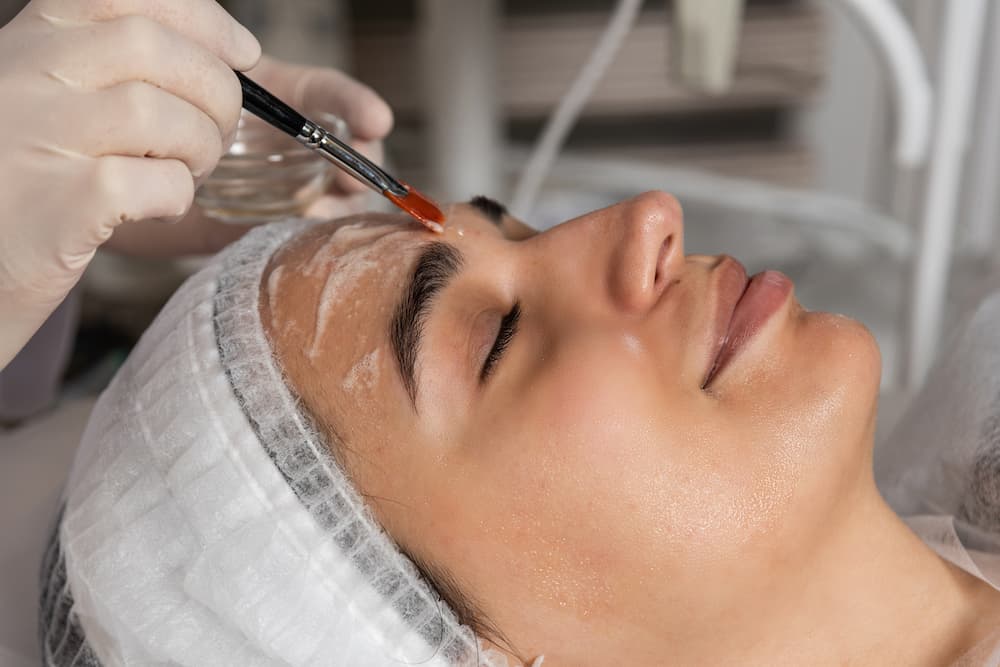Did you know… one-in-five Americans develop skin cancer during their lifetime.
The Skin Cancer Foundation recommends an annual skin exam performed by a dermatologist and at-home exams to catch cancer in its early stages. Skin cancer is highly curable, yet the most prevalent cancer in the U.S. with more than two million individuals getting diagnosed each year. In fact, more people are diagnosed with skin cancer than all other cancers combined.
By seeing your dermatologist annually, you can prevent skin cancer by an early diagnosis. Annual checks are even more important for those with a history of tanning, sunburns, or skin cancer.
The Signs of Skin Cancer
There are two common types of skin cancer – basal cell and squamous cell carcinomas – both of which appear as small red nodules or scaly patches on the skin. They may be raised, ooze, or bleed easily.
Basal cell carcinomas look like a scar or flesh-toned sore. Squamous cell carcinoma develops as a rough-textured lump on your skin. They are frequently mistaken for skin rashes.
Melanomas are a more dangerous, but less common, form of skin cancer. They look like unusual moles. The easiest way to identify melanoma is by using the ABCDEs:
- Asymmetry: Melanomas are not perfectly round
- Borders: Unusual and bumpy borders
- Color: They may appear red, blue, or black
- Diameter: These lesions are typically bigger than a pencil eraser
- Evolving: Melanomas change over time – getting bigger, changing shape, and changing color
If you notice any changes in your skin abnormalities during at-home exams, be sure to contact your dermatologist.
Annual Skin Checks & Exams
At-Home Exam Tips
There are three things to look for when performing an at-home skin check:
- New blemishes or moles
- Changes in color, size, shape, or texture of existing lesions or spots
- Spots that have unusual borders, continuously itch, hurt, or bleed for weeks
Professional Skin Checks
When seeing your doctor for a full-body skin check, make sure you tell them of any changes in your skin or any new spots or lesions that appear. Make a note of any new locations of moles they find – and don’t be shy – a minute or two of awkwardness is worth early detection. Skin cancer can be found anywhere!
If your dermatologist finds a mole or spot that looks concerning or problematic, they will perform a biopsy to determine if it’s skin cancer. They’ll administer a local numbing medicine and the mole will be scraped to collect a minuscule sample. Once the sample is sent to a lab, a pathologist will check it for cancer cells. If your doctor says the biopsy results are benign, there is no further course of action. However, if cancer is detected, your dermatologist will discuss treatment options.
Preventing Skin Cancer
Some people are at a higher risk of developing skin cancer:
- Family history of melanoma
- Those with fair skin, red or blonde hair, or light eyes
- History or sunburn or excessive UV radiation exposure
- Weakened immune system
The conditions can be prevented and you can do things to protect your skin. The most important thing you can do is reduce sunlight exposure to harmful UV rays. Wear sunscreen with an SPF of at least 30 and a wide brim hat while outside. Sunscreen should be reapplied every two hours or after swimming/sweating. If you are at heightened risk of skin cancer, it’s recommended that you stay indoors while the sun is at its peak between 10am and 4pm.
Tanning beds and lights should also be avoided. Tanned skin is frequently one of the first signs of skin damage. Use alternative tanning products like lotions or organic sprays to give your skin that coveted sun-kissed glow without the sun’s damaging effects.
Don’t forget to schedule your annual skin check with the team at Radiant Dermatology. You’re only one step away from preventing skin cancer and living a healthier, safer life. Fill out the form below to get started today!




.svg)



.svg)



.jpg)



.png)


